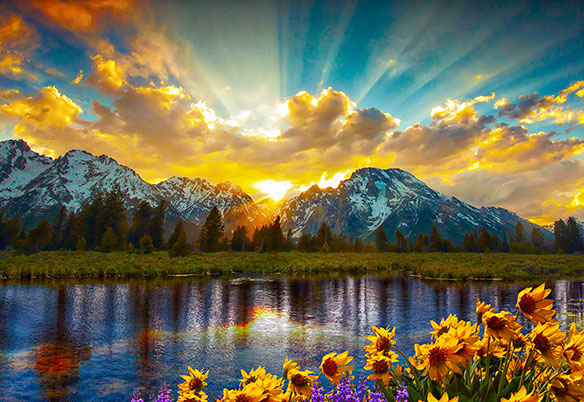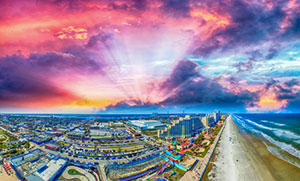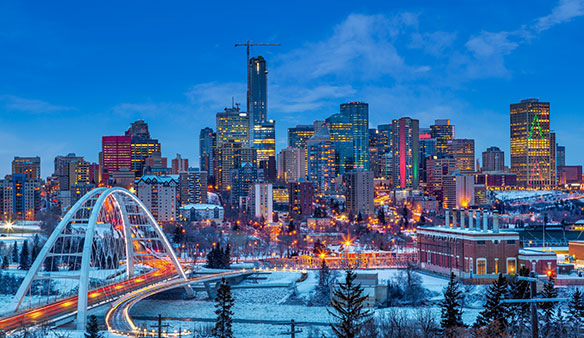
Take a breath, this is temporary
Clicktivated helping destinations connect with travellers during COVID-19

Ben Hatala is the Chief Operating Officer (COO) of Clicktivated – https://www.clicktivatedtravel.com/ – and he talks to Canadian Travel Press this week about how destinations can use videos to create interactive and impactful ways to educate and inspire travellers. Along the way, he makes it clear that “it’s no longer a question of ‘if’ people will travel, but a matter of ‘when.’
Maybe you could start by giving Canadian Travel Press’ readers an idea of what Clicktivated is all about?
Clicktivated transforms destinations videos into interactive experiences, giving viewers the ability to seamlessly connect (click) with any attractions of interest as they watch. Turning inspiration into action.
As a follow up, the travel & tourism industry is in crisis because of COVID-19 and I’m wondering how Clicktivated can help destinations, and others in the industry, in a practical and effective way?
Video remains the most impactful way for destinations to educate and inspire travellers. The idea of taking a trip remains top of mind for many for many, even during this crisis and with a substantial increase in-screen happening, it is vital that destinations capitalize on this.
Clicktivated is helping destinations leverage these market trends through an interactive video experience. Providing a unique way to for viewers to experience all that each destination has to offer as they begin to research and plan their next trip.
Now, I believe the company is currently working with a number of tourism organizations on some campaigns. Can you talk about some of these and how the success of such campaigns is measured?
Clicktivated has partnered with some of the industry’s most notable destinations, such as: Explore Edmonton, Pure Michigan, Travel Wyoming, Daytona Beach, Explore Minnesota and New York to share a few.
Here at Clicktivated, we’re not only evolving the viewing experience, but we are changing how “success” is defined and measured through video.
The number of “Views” a video received is important, but this data point has become outdated when looking to measure the performance of a video.
As an interactive video partner for many notable destinations, we focus on the interaction rate* and click-out rate** for each video.
These unique data points quantify the exact number of clicks and click-outs that occurred during playback and highlight what exactly each individual viewer is interested in.
We average a 62% interaction rate and 21% click-out rate (CTR) across our travel/tourism campaigns in 2020 to date for on-site distribution.
*interaction rate= percentage of viewers that interact within the video.
**click-out rate (CTR)= percentage of viewers that click through video to specific landing page.
So how does using interactive video lead to higher viewership and engagement rates? But I’m wondering if people aren’t becoming tired of videos, Zoom meetings, being in front of their screen all the time?
Video conferencing and watching video for pleasure remain very different experiences in the minds of individuals.
Interactive video allows content creators to capture moments and help viewers turn inspiration into action.
Clicktivated provides viewers a non-intrusive, immersive and fun experience. These key pillars of our technology separate Clicktivated from the rest and position interactive video as desirable experience for all audiences.
 In fact, we’ve seen an uptick in total viewership and clicks since the crisis began.
In fact, we’ve seen an uptick in total viewership and clicks since the crisis began.
Canadians are certainly concerned about the COVID-19 situation in the United States, I’m wondering if you can talk about how tourism is recovering state by state and how viewers of the videos are converting?
We are all concerned about the situation and as neighbouring countries, we share this anxiety. With that said, tourism in the US is beginning to slowly recover.
One key indicator is hotel occupancy, the national average is 47% for August so far, up from 35% in June according to U.S. Travel Association.
This macro-trend continues to illustrate an increased demand for travel in the US, especially destinations within driving distance.
More “remote” destinations have also seen a nice spike in demand and attendance. These locations typically have an abundance of outdoor recreational activities (i.e. National Parks) that families can enjoy safely.
One of the most searched States during this pandemic according to Adara is Wyoming, who we coincidentally started working with in late April.
We helped Travel Wyoming launch seven interactive videos and since their debut, the videos are averaging an amazing 99% interactive rate and 27% click-out-rate (CTR)! Further validating that destinations need to remain relevant and top-of-mind even during a crisis.
One of the big questions of the summer of 2020 is whether there is a new wave of local travel – is there? And the follow up to that would be whether the tourism industry is shifting to accommodate this phenomenon?
Absolutely, there is no doubt that there has been an increase in local and regional travel. At the moment, there’s still low consumer confidence in returning
to air travel and these “drivable” destinations are taking advantage.
To capitalize on this consumer behaviour from a video standpoint, we’ve seen a surge in “road trip”, “safety” and “we are open and miss you” videos this Summer unlike any previous year.
The unique outdoor attributes that destinations have to offer are now front and center and the focal point of videos, social messaging and marketing initiatives.
So, what types of destinations are travelers looking for in this new pandemic world that we’re living in? And how far are they willing to travel to enjoy those destinations?
Overall travellers are hungry to get back out and just take a break from the craziness of 2020 so far.
We are seeing that travellers are preferring destinations that reduce potential unnecessary contact with other travelers.
The US has seen a dramatic surge in the purchase of recreational vehicles (RV’s), private air travel and renting of private homes.
The once highly sought-after major US destinations with crowded pools, hotels and restaurants have been replaced this Summer by quieter options like camping, rental cottages and visiting family.
Additionally, since the pandemic began, the percentage of bookings on Airbnb within 200 miles (322 kilometers) – a round trip travelers can typically complete on one tank of gas – has grown from 33% in February to more than 50% in May according to Airbnb’s chief executive officer Brian Chesky.
Travel agents and tour operators are the primary readers of Canadian Travel Press … so, it’s the industry’s distribution network. What kind of advice or help can Clicktivated offer to CTP’s readers?
Our advice to destinations is to stay resilient and to double down on technologies to reach your potential visitor and focus on the attributes that make your destination unique.
Travel has remained during COIVD-19, however, the distance we travel has changed, so it’s never been more vital to promote in-market attributes and activities.
I’m also wondering what kind of travel messaging is effective in the current marketplace? A number of people have said that now is not the time to put a hard sell type message out. What’s your view on this issue?
We believe that destinations should remain true to themselves during these unusual times.
Making sure that your destination is top of mind should be the main focus and that doesn’t necessarily require a hard sell.
Focus on what makes your destination great.
Leverage video to help tell a better story and technology to offer your target market a new and unique experience during their research phase.
It’s imperative to stay top of mind and remain a source of both information and inspiration during this crisis.
But with that said, messaging should be hyper-localized and consistent with what is taking place in or near a particular destination.
We’ve seen this with numerous destinations producing new videos during March and April showing stories of resiliency and togetherness during the shutdown.
The messaging then transitioned to recovery and rebirth during Summer and now we’re starting to see things return to some level of normalcy.
However, the tactics and targeting remain hyper-local, with an even greater focus on cleanliness and CDC guideline adherence.
Last question. So, what do you see in the future for the travel industry? Is there reason for optimism? Why?
I believe until a vaccine is created, people will be apprehensive to get on an airplane. However, there’s an abundance of positive data points from the past 60 days that demonstrate real optimism within the industry.
It’s no longer a question of “if” people will travel, but a matter of “when.”
The virus has caused us to reconsider how far we’re willing to travel and how we’re going to get to there, but the fact of the matter is we’re still going to travel.
Vacation rentals, cruise bookings and even airline bookings have all increased month over month since April and, as more and more Americans have a collective feeling of being trapped, the demand for these destinations only continues to grow. Let’s all take a breath and remember, this is temporary. We will all get through this and the industry we all love will once again thrive.

